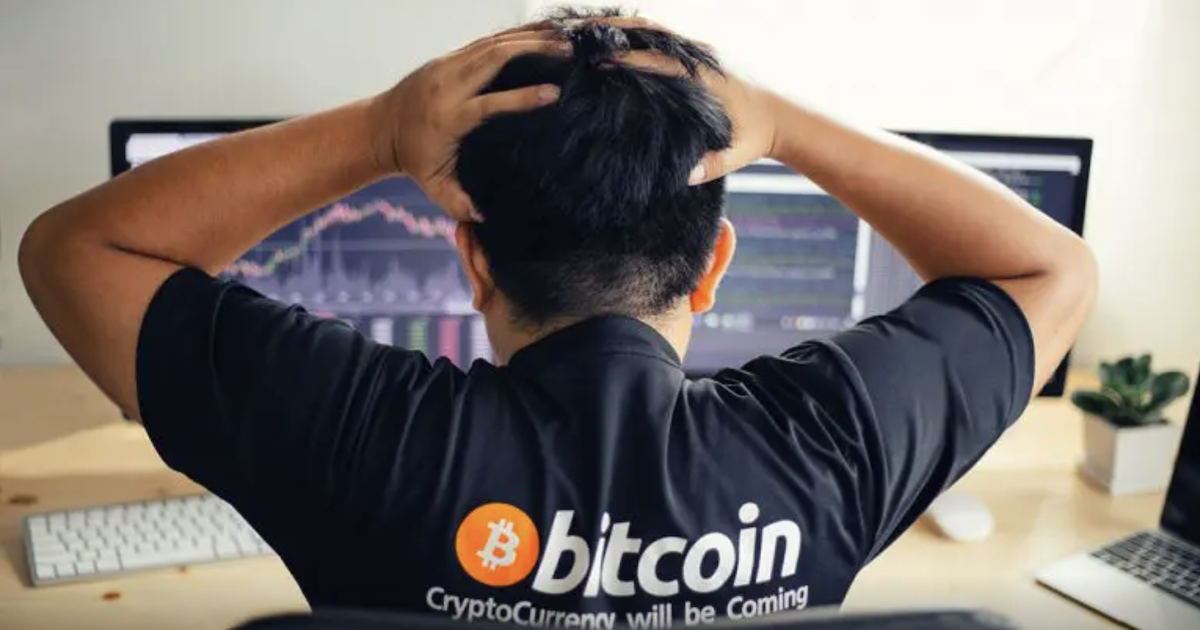According to a survey by Finder.com, the cryptocurrency adoption rate in Singapore increased by 0.2 per cent in just two months. As a whole, close to 16 per cent of Singaporean adults own cryptocurrencies, while the adoption rate in the USA is only at 10.5 per cent.
Globally, 55 per cent of all Bitcoin investors got started just last year, according to Grayscale’s research.
If you have bought Ethereum recently, perhaps you are contributing to the fact that Singapore has the highest adoption rate of Ethereum in the world, ranking first among 27 countries.

But what do all these numbers mean?
With a higher cryptocurrency adoption, it means that Singapore now has more crypto beginners.
Crypto is still relatively new, and many beginners tend to make mistakes. However, regardless if you are a new or seasoned crypto trader, we can always benefit from some tips.
Here are five common rookie mistakes when it comes to crypto trading:
#1: “I’m investing because I heard about it from someone.”
This is a common strategy when getting started. Most beginners get introduced to crypto through friends and family. They tend to buy coins based on others’ recommendations, without doing prior research on the coins and companies.
What’s wrong with investing without research? Without a solid understanding of the network and coins, it is easy to fall prey to scams.

In fact, there is a popular term in crypto called ‘DYOR’, which means Do Your Own Research. Doing due diligence before investing in any crypto coin is the best solution to avoid scams.
You need to take note of these following factors when conducting your crypto research:
- Management team – Actively avoid any company with an anonymous CEO. Find the founders on LinkedIn, and look out for their past experience.
- Whitepaper – Admittedly, some whitepapers are too technical for a beginner to understand such as the Bitcoin whitepaper, but it is still important to read. Essentially, you should understand the coin’s main use case and the value it can bring. If the academic papers make your head spin, there are many online resources to help you understand basic concepts.
- Buzzwords – Web 3.0, AI, Metaverse, and other buzzwords are usually used loosely. If the company has all these generic buzzwords without a concrete plan, it likely is a bad project.
- Community – Most coins rely on their community to support the project. Go through the social media channels of the coins. Do they have an active and healthy community on platforms like Telegram?
#2: “Why was the transaction fee so high?!”

Hidden charges can be frustrating. It is dizzying to deal with all the fine prints about extra fees, especially for a beginner.
Buying with your debit card? There are extra deposit fees. Staking your crypto on the platform? There is an agent fee. Withdrawing your coins to another platform? There are withdrawal fees, on top of gas fees.
There are different types of transaction fees on different platforms, so here is a breakdown of the most common fees on crypto platforms.
The first is transaction fees, which could be a flat fee or percentage fee.
For the flat fee model, you pay a fixed fee for any amount you buy or sell. This is good if you are transacting a big amount of crypto. For the percentage fee model, you pay based on the size of your trade. Sometimes, this is reduced by using the native token of the platform.
The second type is spread, which can be difficult to distinguish as a beginner. The spread refers to the difference between the maximum amount a buyer is willing to pay and the minimum amount a seller is willing to let go of the same asset.
Depending on the liquidity of your crypto, the percentage spread can range anywhere from 0.1 per cent to over 10 per cent. The higher the daily volume and number of transactions on the platform, the lower the cost of spread.
Last but not least is withdrawal fees. Whether it is selling cash or transferring your coins, it is important to find out how much it costs to withdraw when choosing a platform. Usually platforms have a one-off fee for withdrawal – it may be a flat fee or a percentage of your withdrawal.
To transfer your coins to another platform, the withdrawal fees for each coin are often different. Remember to check the rates before transferring. On top of that, there are network fees (such as gas fees) to consider when transferring coins out of a platform.
#3: “I only buy one coin.”
Fundamentally, there is nothing wrong with only buying one coin. However, putting all your eggs in one basket gets risky.
Between the safe and speculative cryptocurrencies, you should consider striking a healthy balance.
Safe coins are usually identified as coins with high market capitalisation. For example, the top three coins at the moment are Bitcoin, Ethereum and Ripple.

Speculative coins can be even more volatile since the price can be easily influenced by investors with deep pockets, commonly known as ‘whales’.
For reference, a typical Singaporean’s portfolio is a mix of mostly Bitcoin, Ethereum, Cardano and other coins.

With the above list, you can explore different categories of crypto, understand more about each coin and diversify your holdings.
#4: “I just keep my coin in the wallet.”
Keeping the wallet is a safe choice, but you are not maximising the potential of your coins. Like cash sitting in your wallet, it does not gain interest.
Here are some lucrative ways to use your coin:
- Stake – By staking your coins, you gain passive income through the interest rates. Some platforms want you to lock up with coins for a certain period of time, usually one to three months on the platform. With bank rates falling after the pandemic, the interest rates on crypto staking is a good alternative.
- Buy digital assets – You can use your coins to buy digital assets. For example, Ethereum can be used to buy digital art in the form of non-fungible tokens (NFTs). You can also buy digital real estate. Prices in the metaverse have skyrocketed recently due to the growing media interest and a large number of new investors entering the space.
- Vote – Some projects allow you to have a say in the development of the network. For example, Polkadot allows token holders to vote for their logo rebranding.

#5: “I don’t know how to sell my crypto.”
Buying on a platform is usually the easiest part. Getting your money out into your bank account is the tough part because the process to withdraw your profits is rather unintuitive.
Here are some common methods to withdraw your crypto into fiat, such as SGD in Singapore:
- StraitsX: They make use of a stablecoin, XSGD that is backed by Singapore dollars. 1 XSGD on the blockchain represents 1 SGD in StraitX’s bank account.
You can sell your crypto and convert it to XSGD, before transferring it into your StraitsX account. They will then transfer that money straight into your local bank account through FAST transfer.

- Bank transfer: Without StraitsX, you can also send fiat into your bank account through bank transfers. Some platforms offer direct bank transfers, making it truly easy for anyone to withdraw money. These direct bank transfers are safe, easy, instant and have no fees.
- Crypto card: Some platforms offer cards that allow users to spend the crypto. Usually, you can convert your crypto to fiat in advance, or the system converts the crypto automatically as you pay. With the card, you can spend in stores like any Visa or Mastercard debit card.
Get more of your crypto questions answered
As a beginner, the world of crypto can be daunting. Navigating past buzzwords, hidden fees and unintuitive features, your crypto journey will be rewarding.
In summary, you should keep in mind these top five mistakes:
- Blindly following others’ advice
- Not knowing the different types of fees
- Only buying one type of coin
- Not diversifying the types of digital assets
- Being clueless about withdrawal from your crypto account
The future of money is in crypto and many people are joining on board, and the best way to learn more is to try it out for yourself.
If you are looking for more crypto beginner tips, Luno has a beginner-friendly learning portal where you can get all your crypto 101 questions answered. For instance, you can learn about the origins of Bitcoins and the difference between Bitcoin and Ethereum, all in bite-sized videos for your easy viewing.
These tips should help any beginner be more comfortable with crypto, so all the best on your exploration of cryptocurrencies!
Featured Image Credit: Shutterstock








